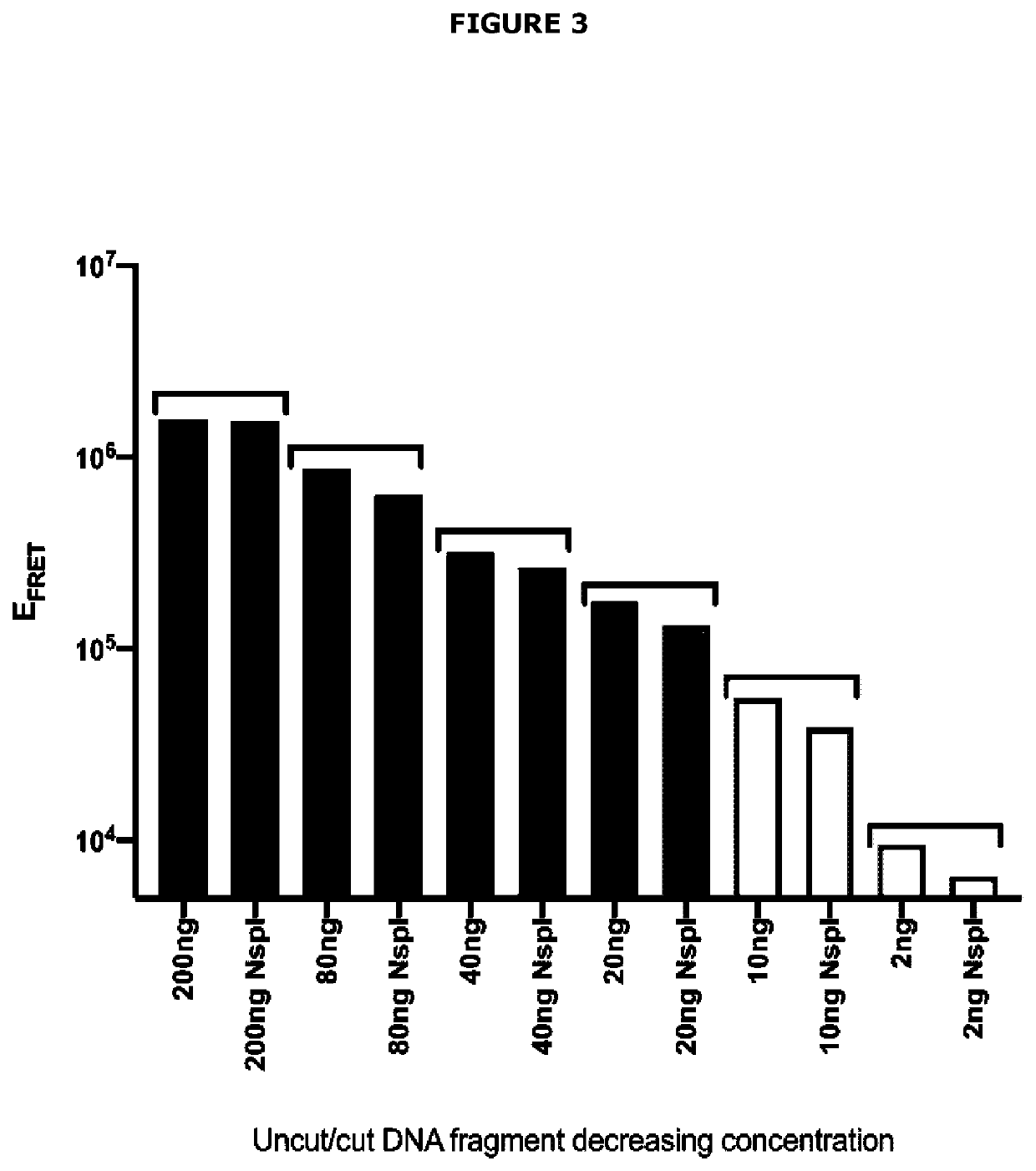Novel ligand assays
a technology of ligand assay and test kit, which is applied in the field of ligand assay, methods and test kits for detection of ligands, can solve the problems of complex preparation process, inability to detect ligands,
- Summary
- Abstract
- Description
- Claims
- Application Information
AI Technical Summary
Benefits of technology
Problems solved by technology
Method used
Image
Examples
example 1
Fret Assay Prototypes 1 & 2: Assay Architecture & Results
[0626]1.1 Assay Architecture: Ligand-SHR / HSP90 & HRE Interaction with Fluorescence Resonance Energy Transfer (FRET) Readout
[0627]The concept of FRET Assay Prototype 1 and FRET Assay Prototype 2 is that a short double-stranded DNA fragment is labelled at the 5′ end with fluorophore Cy3 (or equivalent) and at the 3′ end with fluorophore Cy5 (or equivalent). If the double-stranded DNA fragment is short enough to allow Cy3 and Cy5 interaction, Cy3 upon excitation at 540 nm wavelength will pass electrons to Cy5 and Cy5 will then emit energy at 680 nm. The assay exploits this chemistry by encoding a hormone response element in the double-stranded DNA such that when the steroid hormone receptor is present in a reaction mix and is activated by its specific class of steroid hormone ligand(s), it will bind to the hormone response element. In this position, the steroid hormone receptor protein will physically block electron transfer from...
example 2
Other Fluorescence Assay Prototypes
2.1 Fluorescence Modulation by AR / ARE Platform
[0653]The main components of the fluorescence modulation by AR / ARE platform include a DNA construct that encodes an androgen response element (ARE) and incorporates a fluorescence moiety and a quenching moiety, and combined with recombinant androgen receptor (AR), recombinant heat shock protein 90 (HSP90), and a buffer.
[0654]The DNA construct will exhibit a high level of fluorescence modulation when ARE is bound by ligand-AR thereby causing a change in the level of fluorescence.[0655]The DNA constructs comprising[0656]Oligonucleotides incorporating either ARE SEQ ID No. 1 and 2[0657]Fluorophore dye and a fluorescence quencher matched to the fluorophore dye[0658]Commercial recombinant AR[0659]Commercial recombinant HSP90[0660]Androgenic ligand (e.g. Testosterone)[0661]Necessary buffers.
2.2 Fluorescence Modulation by AR / ARE
[0662]Biochemical studies and the crystal structure of the dimerised AR DNA binding...
PUM
| Property | Measurement | Unit |
|---|---|---|
| pH | aaaaa | aaaaa |
| temperature | aaaaa | aaaaa |
| temperature | aaaaa | aaaaa |
Abstract
Description
Claims
Application Information
 Login to View More
Login to View More - R&D
- Intellectual Property
- Life Sciences
- Materials
- Tech Scout
- Unparalleled Data Quality
- Higher Quality Content
- 60% Fewer Hallucinations
Browse by: Latest US Patents, China's latest patents, Technical Efficacy Thesaurus, Application Domain, Technology Topic, Popular Technical Reports.
© 2025 PatSnap. All rights reserved.Legal|Privacy policy|Modern Slavery Act Transparency Statement|Sitemap|About US| Contact US: help@patsnap.com



